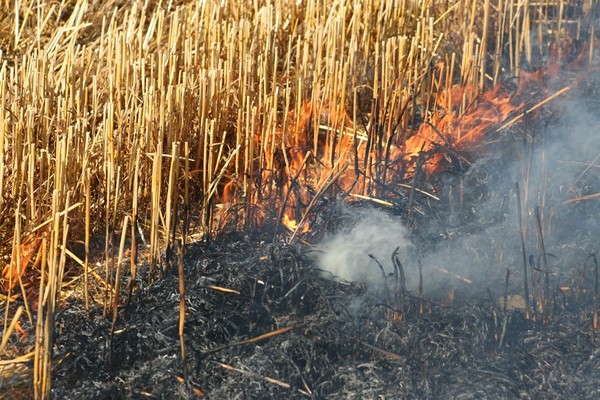The pressure for a limited return of straw burning to aid the control of black-grass has not gone away. I’ve just written a brief data review on this as part of a more comprehensive report on the impact of straw burning on crops and cropping. Don’t get too excited; this review has not been financed by a UK organisation and looks at the potential impact of straw burning in another part of the world.
The review has taken longer than expected because nearly all the papers I have had to read were so old that they weren’t available electronically. Plus, the libraries at Defra and Rothamsted are both moving and so many of the references were in packing cases.
So I had to employ other means to get the information, including contacting the authors of papers that were published up to 30 years ago! I also visited the Cambridge University Scientific Library where papers had to be dredged up from the very bowels of the earth. This is a great institution - I love going there and luckily it is only a mile from where I live.
There is no doubt that burning straw will help to control black-grass.
Updating the model produced by a young (at the time) Stephen Moss would suggest that if, without burning, one needs 95% control from herbicides in continuous autumn cropping to contain populations, then this would fall to around 92.5% control with burning.
Now, this doesn’t sound a lot - but look at it the other way round. Without burning you can allow 5% of the plants to survive after herbicide application. With burning this figure rises to 7.5% plants; a difference of 50%. This is roughly the same level of reduction in required herbicide control that is achieved with the cultural control method of adopting very high seedrates of winter wheat.
But, it’s not as simple as that. Straw burning breaks the dormancy (or stimulates the germination) of seed on the soil surface and so a higher proportion emerges when the pre-emergence herbicides are most active. This is provided that the seeds remain close to the soil surface after cultivation i.e. direct drilling or very shallow tillage. A surprisingly high proportion is buried below 5 cm where disc/tining to 15-20cm is used.
Then there is the issue of the role of crop residues to consider.
A student at Long Ashton did some pot studies which suggested that well distributed chopped straw that covered a lowish proportion of the soil surface did not affect the control of black-grass with isoproturon. However, experiments in pots in Denmark and field trials in France suggest that as little as one tonne of chopped straw/ha lying on the soil surface and/or incorporated in the top few cms can reduce the efficacy of both soil-acting and soil/foliage-acting herbicides. The more straw - the greater the reduction.
The story is further complicated by the fact that straw ash can adsorb herbicides. This takes me back to the early 1980s when adsorption of herbicides by straw ash often explained poor chemical control in direct drilled crops. However, experiments at the time showed that it took a few years of direct drilling and straw burning for this to become significant. So it can be concluded that ash, as a result of the occasional burning of straw, would have little impact on the activity of soil-acting herbicides.
Trials in the 1970s/1980s compared black-grass numbers in continuous winter wheat established after straw burning or baling. In a trial series over four years, where paraquat was used pre-drilling but no selective herbicide was used in the wheat, there was no difference in black-grass head numbers between the burnt and the baled plots where the land was ploughed. However, after four years where the plots were tined to 15 cm depth, there were five times as many black-grass heads in the baled plots than in the burnt plots and more than seven times as many where the land was direct drilled.
This indicates that straw burning would have the greatest impact on black-grass numbers where the land is not ploughed.
So there is no doubt that ‘strategic’ straw burning would help to reduce black-grass populations but alone, it is not a miracle cure. However, it has a potential role as part of a long term control strategy where other cultural control measures are also employed in order to reduce large black-grass populations down to manageable proportions.
On the other hand, please remember that where background organic matter levels are low, incorporating straw on a regular basis can help to maintain a higher level of soil fungal biomass that will itself help to support good soil structure.

